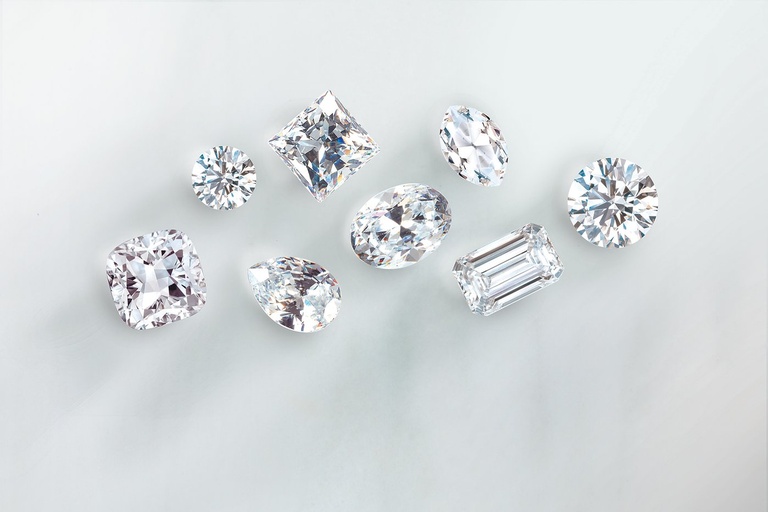Diamonds grown in microgravity with higher purity and larger size for special jewelry and industrial applications.
Updated: 2025-01-11
Created: 2018-12-03
Status
Lab-grown diamonds are common on Earth and small diamonds were first produced in space by Chemical Vapor Deposition (CVD) in 1995 (Wake Shield Facility).
Very high price per kilogram but likely challenges include requiring tens of kilowatts of power for months and large quantities of consumables (gases) to produce large enough sizes.
Applications
- Jewelry (gemstones) in multiple colors and consistent sizes.
- Make lab-grown diamonds extra special by making them in space.
- Chips based on diamond substrate instead of silica for much higher thermal conductivity (GaN-on-Diamond technology).
- Processing chips, optics, laser devices, and thermal conductivity equipment.
- Potentially reducing the environmental impact of lab-grown diamonds.
Why & Solution
Microgravity processing can be used to improve the purity and crystal structure of other synthetic materials, such as gallium nitride and diamond substrates.6
Diamond thin-film was synthesized under microgravity using Japanese free-flyer (SFU, Space Flyer Unit) launched in March 1995. This program achieved the space-based production of diamond by Chemical Vapor Deposition (CVD). 1
Diamond growth process begins with tiny diamond seed. CVD uses ultra-pure carbon-rich gases in a controlled environment. After approximately three to four weeks, the crystals have grown to significant size, typically three to five carats. This produces Type IIa diamonds, which are quite rare in nature and account for less than two percent of all mined diamonds. Type IIa diamonds have no, or almost no, impurities; they are the purest, highest-quality diamonds.3
Large numbers of diamonds can be produced that are identical. This is important for jewelry, where consumers want matched stones in a single piece of fine jewelry. Lab-grown diamonds have the same scintillation, sparkle, gleam and life as mined diamonds and provide an exceptional alternative. Consumers of gems or industrial diamonds can get a larger or higher quality diamond for the same price or identical properties for a lower price. For gem consumers, who feel that mined diamonds are inconsistent with their personal values, lab-grown diamonds provide a conflict-free and environmentally friendly replacement to mined diamonds.3
Optical windows offer the ultimate in transparency for scientific and laboratory customers. Our CVD diamond material has the same optical properties as mined diamonds, with transparency from deep ultra-violet to far infra-red. Diamond material is often used in fiber optics and spacecraft. Some pink diamonds, from the only mine in the world producing pinks, cost well over \$100,000 per carat. Last year, a 5.5-carat oval-shaped fancy vivid pink diamond sold for \$9.6 million, which is \$1.7 million a carat.3
In the case of lab-diamonds, the ability to create higher-quality gem-diamond product economically is a relatively recent development –within the last decade. The business of manufacturing lab-created diamonds for industrial application (synthetic diamond) has been around for decades, and the industry currently supplies >99% of global industrial diamond supply for use as abrasives. In medium-to-longer-term there will be shift from jewelry to application in high-tech developments such as processing chips, optics, laser devices, and thermal conductivity equipment. The high-tech industry enthusiastically awaits economically available mass-produced high-quality diamond, the lab-diamond manufacturers know this and most are just using jewelry as a stepping stone.4
The main reason for the move to diamond substrate for GaN is because it has the highest thermal conductivity, up to 2000 W/mK, of any commercial material at room temperature. Over the last ten years, a process has been developed that has enabled starting with a commercially available GaN-on-Si wafer, removing the thermally limiting silicon substrate, and replacing it with CVD diamond. In detail, the process involves removing the host Si layer beneath the AlGaN/GaN epitaxy, depositing a thin dielectric material onto the exposed AlGaN/GaN, and then subsequently growing CVD diamond onto the surface.5 These kinds of chips will be used by Akash Systems.
Revenue Estimation
1 carat = 200 milligrams. 1 kg is 5000 carats. Price of 1 natural carat is over \$2000 in which case 1 kg would have a value \$10 million.
Lightbox sells laboratory grown diamons for \$800 per 1 carat 2 in which case 1 kg would have a value of \$4 million.
Both are much higher than the transport costs and space-grown diamonds will be more unique.
Earthly Solution Risk
The industrial and environmental benefits of space-grown diamonds remain to be seen but for jewelry they would be more special.
